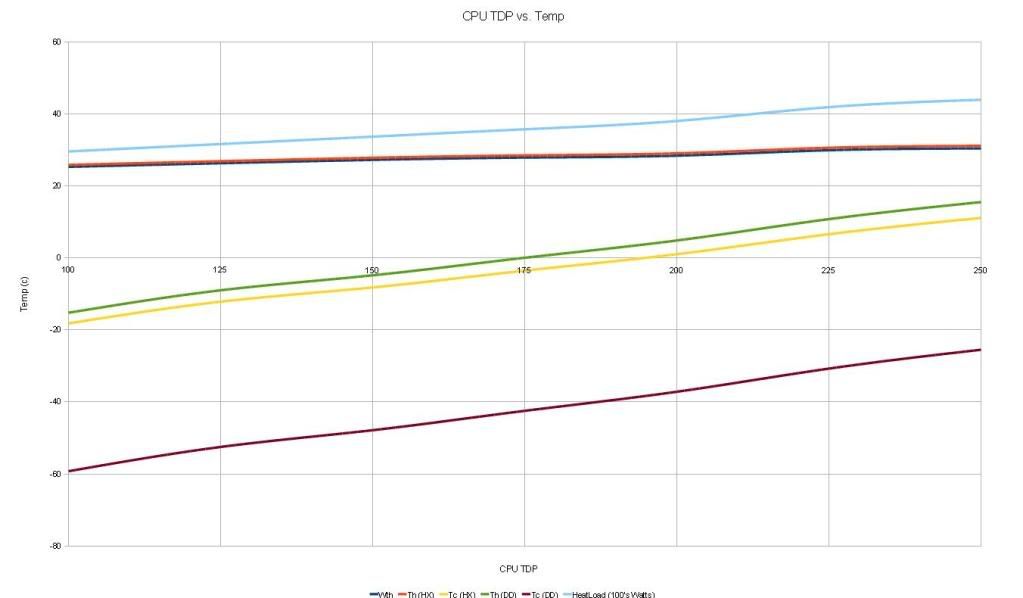Way to **** on his camp fire.
No....that's not the intention at all.....
A lot of people are over optimistic wih TEC's unfortunately that over optimism is directly inversely and exponentially proportional to the happiness at the project end which is felt amongst all the readers of the thread and consequently TEC's get a bad name.
If one works within the capabilities of TECs and understands how they work TEC projects ultimately appear successful and people are not so dismissive of the technology.
One thing this project highlights is that throwing more TECs at a project does not necessarily get you lower temps - you need to understand how TECs work and be a bit more canny. In this project each TEC is a standalone single stage TEC. The have their hotsides collectively cooled so they are basically at the same temp, they are powered the same so they have roughly the same Dt so consequently they have the same coldside temp and cooling so once the coolant reaches the temp of the coldside of one of the TECs thats it...in reality there will probably be a small reduction from there because the TECs wont neccessarily be all EXACTLY the same temp and also having a q much higher than the load can trade off a bit more Dt but it is not neccessarily going to be great. So throwing more TECs at a project and just collectively cooling/powering them is not the best way to low temps...
The only reason you throw more TECs at a project and collectively cool/power them is when you are undervolting to get more efficiency then you have to multiply up the TECs to increase the Q otherwise you have no cooling power BUT if do this hotside cooling is the key you must treat hotside cooling as your sole goal otherwise you end up with an efficent system but not with much cooling.
Last edited:


 Bit too much maths in between build updates though
Bit too much maths in between build updates though  Guess its got to be done on a build like this though
Guess its got to be done on a build like this though

 ) and can be had for £95. There is also a 60A model....
) and can be had for £95. There is also a 60A model....